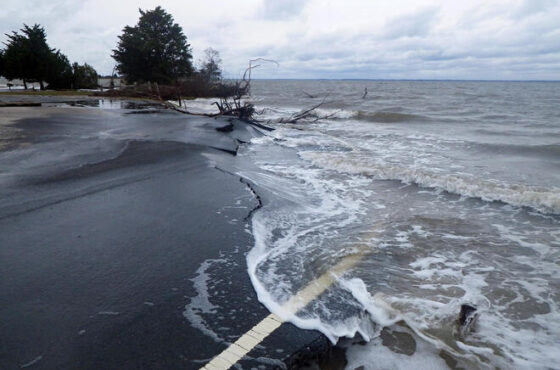Trump EPA: Creating Tomorrow’s Toxic Problems, Today
Published by the Natural Resources Defense Fund

Residents of Hoosick Falls, NY displaying signs with their body’s PFOA levels
Used with permission of pfoaprojectny (@pfoaprojectny1)
It’s been a little less than a year since EPA’s toxics office became a wholly-owned subsidiary of Dow-Dupont, Exxon, “Chemours” and other chemical manufacturers, and in that time it has been transformed into the Make a Wish Foundation for the chemical industry by:
- Shelving a proposed ban on agricultural uses of the dangerous neurotoxic pesticide chlorpyrifos (challenged in court by groups including Pesticide Action Network, Earthjustice and NRDC);
- Weakening new rules for evaluating the risks of toxic chemicals under the Toxic Substances Control Act (TSCA)(challenged in court by numerous groups including NRDC);
- Attempting to block petitions by citizens under TSCA seeking restrictions on unsafe chemicals (contested in court by groups including NRDC—EPA has already partly lost this case);
- Indefinitely postponing TSCA rules proposed by the Obama EPA to protect workers and consumers from the well-documented dangers of toxic solvents, despite several additional needless deaths linked to these chemicals since the rules were proposed (watch this space).
Now, adding to these many actions to weaken protections from toxic chemicals, EPA is taking dangerous, unlawful and alarming steps to dismantle the long-standing TSCA program for reviewing the safety of new chemicals before they are allowed on the market. NRDC recently took EPA to court to stop this irresponsible rollback of core TSCA protections
TSCA focuses on addressing the risks of two classes of chemicals. The first consists of “existing” chemicals—the thousands of substances in use when the law was first enacted in the mid-1970s. The second includes “new” chemicals—those entering the marketplace for the first time after the law was enacted. Congress required EPA to review all new chemicals before their introduction so that risks to people and the environment could be identified and prevented before harm occurs. Under the law, chemical manufacturers are required to provide EPA with a Pre-Manufacture Notification (PMN) of their intent to begin production of a new chemical, and EPA then has the ability to impose restrictions to protect against potential risks. It can ban manufacture of the new chemical, prohibit certain uses, impose requirements to ensure that workers manufacturing or processing the chemical are properly protected, limit releases into the environment, and/or require testing to better understand the chemicals’ effects on health or the environment. Since the PMN program began in 1979, EPA has reviewed thousands of new chemicals, many of which are now in extensive use across the US.
For decades, EPA has used binding and enforceable agreements with chemical manufacturers, known as “consent orders” to impose the requirements necessary for the safe manufacture and processing of new chemicals that may present unreasonable risks. These consent orders—sometimes called “5(e) orders” after the provision of TSCA by which they are authorized—have been the linchpin of the program for reviewing new chemicals since its creation nearly forty years ago.
Under the original law, the new chemicals program was beset by problems, stemming primarily from the limits imposed by Congress on EPA’s authority due to lobbying by the chemical industry. As a result of those limitations, as well as unwarranted exemptions from requirements to undergo new chemical reviews, extremely problematic and persistent toxic chemicals have avoided restriction under the new chemicals review process—including toxic flame retardants and the perfluorinated “Teflon” chemicals that are now found everywhere in the environment and in our bodies.

Phthalates, flame retardants and other toxic chemicals are commonly found in household dust
Concerned about these limitations, Congress voted in 2016 to strengthen the New Chemicals Program, as part of its reauthorization of TSCA. Those changes included an explicit rejection of the consideration of cost in evaluating the health and environmental effects of chemicals, a mandate to protect vulnerable populations including children, workers and the elderly, an obligation for EPA to make an affirmative determination as to whether a new chemical is “likely to pose an unreasonable risk” before allowing the chemical into the marketplace and the environment, and the ability to restrict manufacture and use pending further testing where the available information is insufficient for a meaningful evaluation of risk. In evaluating whether a new chemical might pose an unreasonable risk, the Agency is now also required to consider the intended use of the new chemical and any future uses that are “reasonably foreseen.”
Those changes combined to make the review of new chemicals more rigorous, and the increased rigor in the first several months of implementation of the law led to an increase in the number of consent agreements required by EPA for new chemicals. For the public, that was a good thing: more testing of new chemicals was taking place, and more protections for workers, the environment and the general public were put in place.
Not surprisingly, this was not what the chemical manufacturers had in mind for the revised law, and the industry pressured EPA to reverse course and roll back its improved reviews and stronger restrictions of new chemicals. Of course, with Anti-Administrator Scott Pruitt and Toxic Chemical Enthusiast (TCE) Nancy Beck in charge of the EPA’s Toxics Office, minimal pressure was required. Embracing industry’s agenda, EPA recently announced a sweeping reinterpretation of the PMN provisions of the law that abandons EPA’s long-standing practice of relying upon section 5(e) consent orders to ensure chemical manufacturers comply with imposed restrictions. The Agency instead will make findings that new chemicals raising health or environmental concerns are “unlikely to present an unreasonable risk” based on unenforceable industry promises to limit exposure, and will narrow its review of a new chemical to the industry’s intended uses, ignoring other foreseeable uses that could present serious risks. (Note: EPA called this reinterpretation a “Framework” but its effect and purpose make it a ‘rule’ in legal parlance, despite EPA’s failure to follow required procedures for imposing such “rules.”)
This is exactly the opposite of what Congress intended (and in fact mandated) when it revised TSCA in 2016.
On January 5th, NRDC filed a lawsuit to overturn the Administration’s “Framework” weakening the review of new chemicals because it is both unlawful under TSCA and was adopted without the minimum legal requirements for “rules.” Before filing this case, we sent a letter to EPA with our colleagues at Safer Chemicals Healthy Families (SCHF), Earthjustice, Center for Environmental Health, and Environmental Health Strategy Center asking EPA to stop implementing the “Framework” while it considered public comments and looked more closely at the important legal and policy questions raised by our groups and others. EPA has not responded to the letter and, by all reports, is applying the “Framework” to new chemicals in the review pipeline. Our concerns have been reiterated and amplified in detailed comments SCHF filed on behalf of NRDC, Earthjustice and 17 other organizations.
EPA’s implementation of the Framework has been difficult to follow because the Agency’s decisions are released after a substantial lag time and with only minimal transparency for the public. It is no coincidence that delayed reporting on Agency decisions and shielding information from the public have worsened over the past several months, a useful way of limiting public oversight of the Agency’s full-service industry catering. Nonetheless, we expect that very soon EPA will start rolling out decisions on new chemicals based on the Framework and that the number of new chemicals of concern subject to inadequate protections and restrictions will rapidly grow in volume. As this weakening of the new chemicals program unfolds, we will look for other opportunities to hold EPA accountable for its violations of law and inadequate protection of public health.
Absent adequate review and appropriate restrictions on the introduction of new chemicals into the marketplace, a host of new chemicals that pose risks to public health and the environment are likely to pass through the newly porous chemical review process, leaving us wondering, years from now, how we ended up, again, with persistent, toxic chemicals in our drinking water, and why developmental toxics are, still, leaking out of our furniture, our carpets and our walls.
Read the full article at: https://www.nrdc.org/experts/daniel-rosenberg/trump-epa-creating-tomorrows-toxic-problems-today





